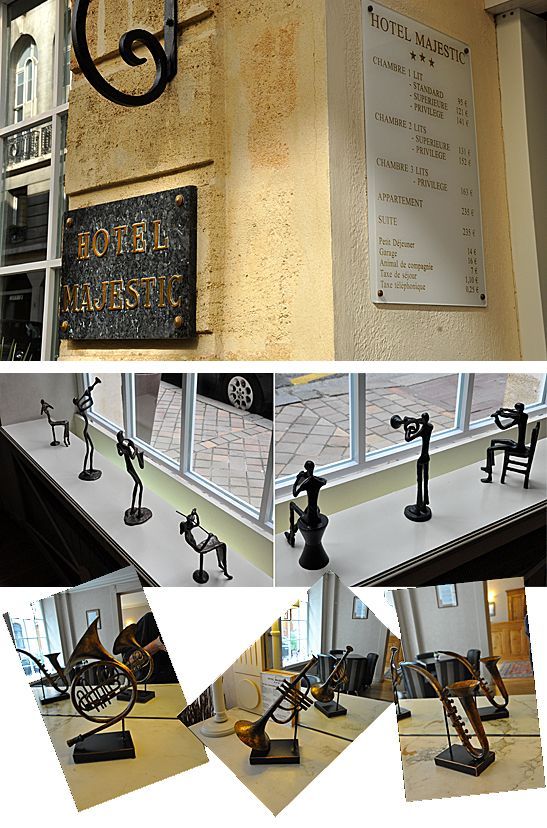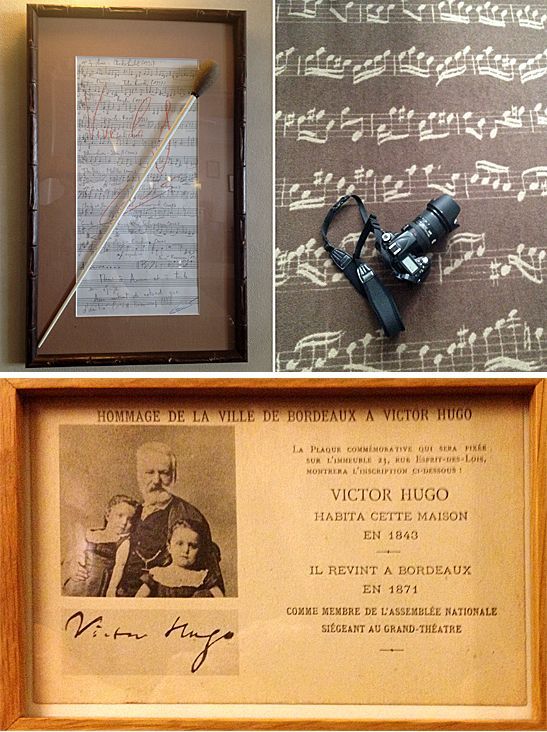Article
Bordeaux: The 'Croissant City' on the Garonne
Author(s):
The up-and-coming city in southwest France has a history as a stopping point for religious pilgrims en route to Spain's Santiago de Compostela, but in its modern-day incarnation, residents say the city is becoming more fashionable than Paris – "Bordeaux is half the cost so twice the value."

We are standing below the Grosse Cloche of Bordeaux and the old bell of the 15th-Century town hall. The town hall clock was created to allow people to see the time without looking at the church’s steeple next door. Yet the pull of the Church in the Middle Ages continued because here passed the pilgrims en route to regain redemption at the legendary Santiago de Compostela in northwest Spain.
We are hearing all this from a French friend who used to live in Paris and now has relocated to Bordeaux. We always enjoy his Euro-centric take on life even though he is, at the moment, somewhat disappointed in the decline of America’s role in the world. “We can be critical of the United States,” he says, “Because we are good friends and we French have a saying that ‘A good friend is like a good bra, close to your heart and giving you support.’”
“And good friends know how to change the subject. So tell us why you moved here, what’s so special about Bordeaux?” we ask.
“Paris is out of fashion,” he says earnestly. “Bordeaux is half the cost so twice the value. It’s the up-and-coming city in France. The TGV (high-speed rail), nonstop next year will lower the Paris time to 3½ hours. Furthermore, our city has not been trampled to death by tourists. This is the real France, the way Eastern Europe is now seen as the real Europe. Look around! You are in a city yet look at all the greenery! And feel our quality of life! We have 14 Michelin-starred restaurants in our area. Gourmet heaven! We have the great Bordeaux vineyards with all kinds of tours, bilingual of course for you monolingual Americans! And we have superb public transportation though this is a flat city and walking everywhere is easy.”
We get this often from Europeans who are convinced their lifestyles are superior. It makes us wistful they may be right. We recall what a French Uniworld guide had told us a week before on our river boat. “It is complicated to find a toilet in French cities but the work laws are easy to understand. The unions prevent flexibility. Our work week is 35 hours with 5 weeks’ vacation. If an employer asks someone to work a 39 hour week for, say, 2 weeks that adds a full day to the vacation time by law. So an employee working 39 hours a week regularly ends up with an additional 5 weeks on top of the original five.”
Knowing we are healthcare professionals, she says, “Hospital doctors work long hours and, by law, end up accumulating as much as 5 years additional retirement time.”
We ask about the French national health services. “The costs are shared 70% by the government and 30% by the employer,” she says. “For example, a doctor’s office call may have 50€ paid by the government insurance and 23€ by the employer.”
But we digress. Our friend at the Grosse Cloche has a brochure he hands us. It matches his enthusiasm: Bordeaux, the 6th largest city in France is growing, and 40% of its new arrivals are aged between 24 and 40. The city’s center is now a UNESCO World Heritage Site. Cruise lines make 35 stopovers a year — the city is the second-busiest cruise ship port-of-call (after Le Havre) on the French Atlantic and Channel coast.
We study the tourist literature Uniworld river cruises has just given us now that its cruise is over and, first things first, go off to check into our hotel.
Where to stay
We have chosen hotels this time for their convenience to the city transportation that will take us back to the airport.

The Hotel de Seze is family owned and the mother and daughter with the architect created its design, decoration, and thus its atmosphere.
The property was built in 1927. Cedric Janvier, the general manager, tells us his family have been in the hospitality business since 1980. Hotel de Seze opened in 2012 named after the Count de Seze, a lawyer who unsuccessfully defended King Louis XVI before the Tribunal in the French Revolution. Later, Seze was himself imprisoned but not guillotined.
The hotel was built of pierre de Frontenac old stone has 52 rooms and 3 suites. Its assets include, as always, location — downtown. And that led to its history, because the Count of Seze was the center of city life in the late 18th and early 19th Century

The Hotel Majestic also is equally close to the city’s downtown attractions and its public transportation.
We wondered about its musical theme until we realized it’s just a block away from the Grand Theatre and during opera season the performers stay here. Decorations include musical figures, framed sheet music and conductor’s batons and even our bedroom carpet had a musical score running across the floor.

Hotel Majestic. Victor Hugo lived in this house in 1843.
What to See
This is a city with fast, frequent public transportation, a compact downtown, a well-run tourist office with free walking maps and it is easily walked.

Quality 1930s art advertising liquor competes with sculpture from an earlier century.

The nice thing about appreciating contrasts in architecture is you don’t have to understand the language.

And as you walk around you’ll see oddities from a “crashed” Jaguar Mark II protruding through the Victor Hugo multi-story car park to the 2005 Blue Lion Veilhan in the Place Stalingrad, which allows its colors to break with the “brutalistic style of sculpture.” And you’ll see reminders from the airport baggage claims to the streets themselves that wine is important.

The French Resistance Museum at the Centre National Jean Moulin offers a sobering experience. It was founded in 1967 in a mid-19th-Century bank building. We mention Jean Moulin towards the end of our 2011 story the Reward of Travel. What a magnificent human being Moulin was!

But it has long been recognized in Europe that not all French were like Jean Moulin. The south east part of France (as shown in the map in the museum) collaborated with the Nazi regime under its name of Vichy France.

It is most touching to see an older woman with a cane studying the exhibits so attentively. Who is she? Did she have a grandson who fought for the French underground resistance? We could not bear to stop and ask her.

It is horrifying to be reminded of how the Nazis exterminated 6 million Jews. In the top image we see the concentration camp clothing Jews had to wear. Bottom left image. US resources used by the Free France military. Bottom right photo of Professor Paul Reis, cancer specialist in the Faculty of Medicine in Strasbourg killed while evacuating wounded members of the Resistance.

We thought the Place des Martyrs de la Resistance, less than a mile from the Jean Moulin Center, might offer more insight into this part of French history, but the history it has exposed is archaeological — and in the crypt of the 12th - 14th-Century St. Seurin Basilica, evidence lies at your feet that this was once a Gallo-Roman necropolis.
St. Seurin sounds more interesting than it really was and we get more pleasure on the way back to our Hotel de Seze watching families enjoy the miroir d’eau, the shallow pool by the Garonne River bank surely created for small children.

Photography by the authors.
The Andersons, who live in San Diego, are the resident travel & cruise columnists for Physician's Money Digest. Nancy is a former nursing educator, Eric a retired MD. The one-time president of the NH Academy of Family Physicians. Eric is the only physician in the Society of American Travel Writers. He has also written five books, the last called The Man Who Cried Orange: Stories from a Doctor's Life.




